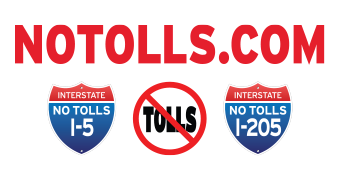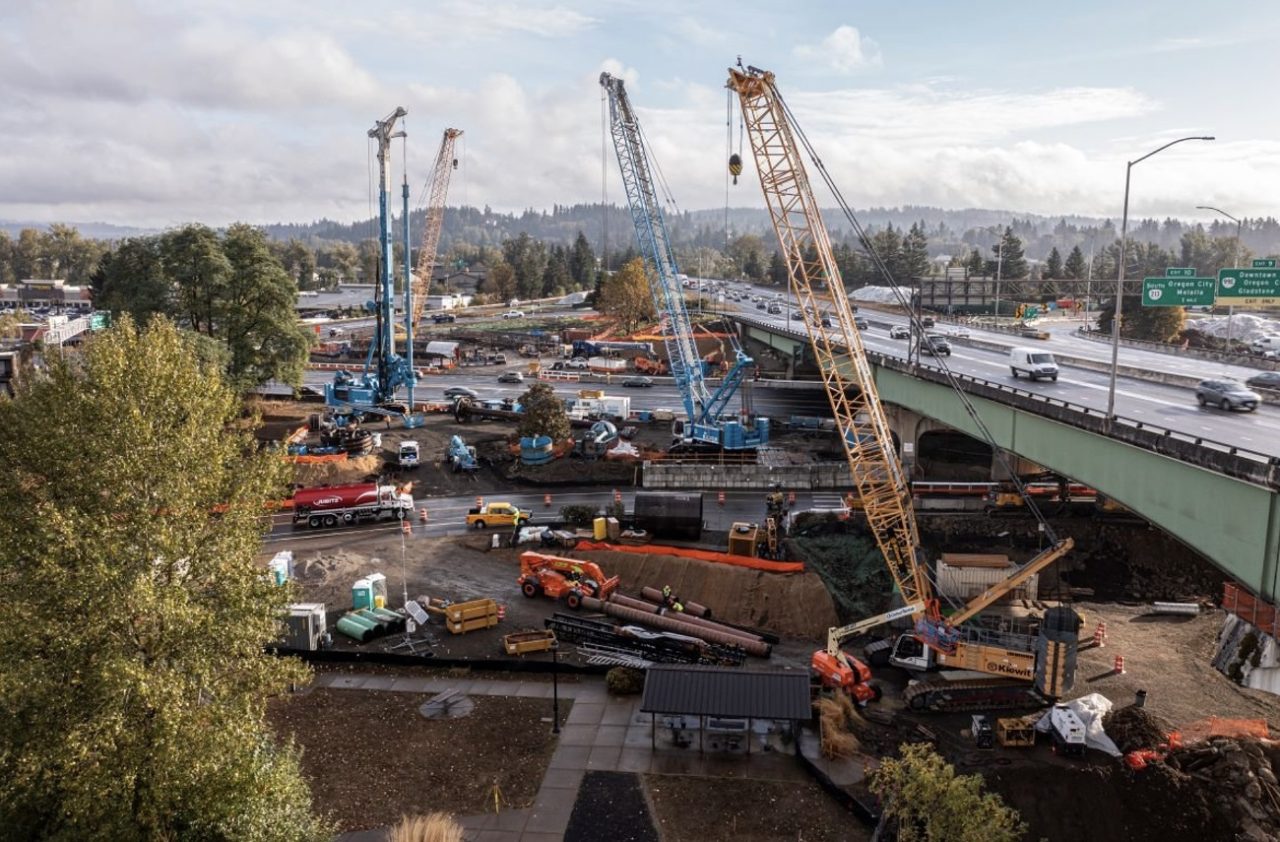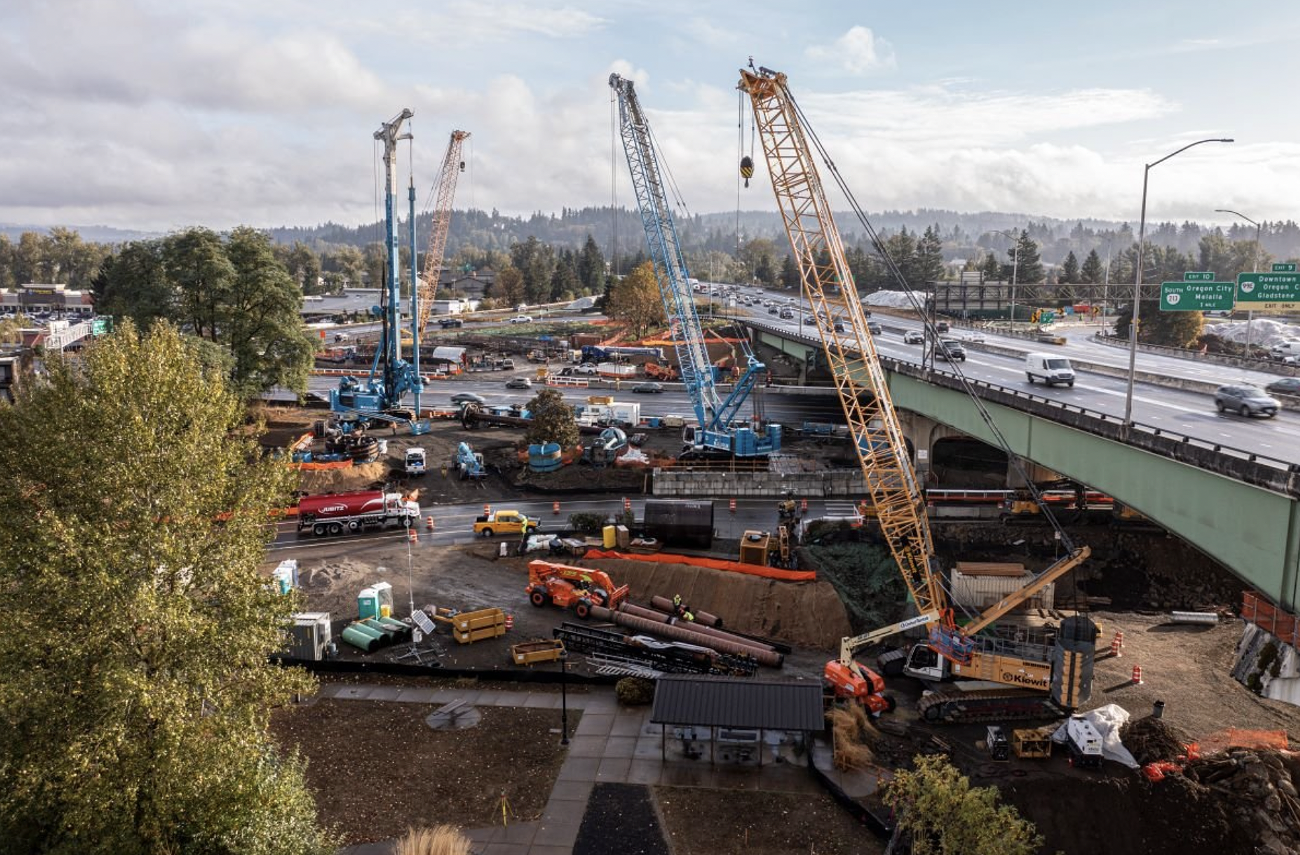Skepticism from Governor Tina Kotek and state legislators about the Oregon Department of Transportation’s tolling plans may have lasting impacts.
By TAYLOR GRIGGS — Portland Mercury
May 9, 2023
To toll or not to toll?
That is the question du jour for the Oregon Department of Transportation (ODOT), transportation advocates, state legislators, and their constituents. Last week, Governor Tina Kotek provided an answer—at least for the time being—when she ordered ODOT to pause its toll collection efforts until at least 2026.
Kotek made the decision after hearing from legislators with concerns about ODOT’s plans to toll two stretches of I-205 in Clackamas County. At the end of April, some Clackamas County Democrats sponsored House Bill 3614, which would prohibit tolling on state highways until 2026. In a May 1 letter to Kotek, legislative leadership from the House and Senate announced the formation of a special subcommittee on transportation planning under the existing Joint Committee on Transportation.
“The committee’s task is to review the planning and implementation of major transportation projects,” states the letter written by Senate President Rob Wagner, House Speaker Dan Rayfield, Representative Susan McLain and Senator Lew Frederick, co-chairs of the Joint Committee on Transportation. “The goal is to ensure transparency and accountability to the public, and evaluate effectiveness towards stated goals.”
ODOT critics see the tolling pause as a major rebuke to the agency’s plans to toll road users on I-205 and I-5. They hope the new legislative subcommittee will hold the state transportation department accountable for how it uses a limited budget to fund major capital projects.
The decision comes at a time when statewide transportation funding is in dire straits and ODOT is counting on tolling revenue in order to pay for its big highway projects. Will ODOT be able to find a new funding mechanism for big-ticket capital projects without unpopular tolls—or will the inability to implement this program be the nail in the coffin for some freeway expansion projects?
The Case for Tolls
ODOT has plans for several major freeway expansion projects in the Portland area. Construction on I-205 at the Abernethy Bridge is already underway, and it will cost the state transportation agency about $500 million (about double the initially estimated price). But ODOT also has expensive plans to expand another part of I-205—as well as I-5 at the Rose Quarter and at the Interstate Bridge between Portland and Vancouver—and it needs a funding mechanism in order to pay for all of it.
Right now, ODOT rakes in a significant portion of its budget from state and federal motor fuels taxes, but that money will dry up as more people start driving electric vehicles. The new plan for funding? Tolling freeway users on a piecemeal basis, starting with I-205 in Clackamas County.
Those tolls would be implemented to vary in cost based on time of day, and ODOT hasn’t stated outright what the average road user would pay. On the I-205 Toll Project website, the agency states “neither the price of tolls nor the exact times of day tolls have been collected have been determined” and the price wouldn’t be set until about six months before tolls begin.
However, in the I-205 Toll Project Economics Technical Report, ODOT states it would charge up to $2.20 to cross I-205 at the Abernethy Bridge during peak hours, and up to an additional $2.20 to cross the I-205 bridge over the Tualatin River near West Linn. According to more recent ODOT analysis, morning peak tolls would be less than in the evening, meaning people who cross both of these bridges twice daily for their commute could pay up to $8.20 each day in tolls alone.
ODOT critics note road user fees like tolls serve another purpose: decongestion. Alleviating traffic is one of the main reasons ODOT cites for its freeway expansion project—but critics say spending millions (or billions) on adding lanes to I-205 and I-5 isn’t necessary when congestion pricing could reduce traffic by simply being a deterrent to driving. Moreover, congestion pricing could generate funds for improved public transportation services to give commuters a viable alternative to driving.
Chris Smith is a co-founder of No More Freeways PDX, an advocacy group that opposes ODOT’s proposed freeway expansions. In an April public hearing for the I-205 Toll Project, Smith asked ODOT to consider this method of decongestion.
“I think congestion pricing is the appropriate tool for managing the performance of facilities. But coupling that with freeway expansion is counterproductive,” Smith said. “A congestion pricing scheme that charged a much more modest toll to manage congestion and then applied that to creating transportation choices like better transit service would be more effective for the community and significantly less expensive for both the public sector and the private folks using the facility.”
In addition to these two stretches of I-205, ODOT plans to use tolls on I-5 to pay for the expansion project at the Rose Quarter and at the Interstate Bridge. While the agency has said in previous Environmental Assessments for the Rose Quarter project that it hasn’t considered implementing congestion pricing on its own without building out more lanes of freeway, ODOT has studied tolling as far as it pertains to paying for the roughly $1.4 billion project.
In an April 7 email to the Mercury, Rose Gerber, a public outreach manager for the Rose Quarter Project said ODOT does consider congestion pricing as a “key tool in [the] Urban Mobility Strategy to reduce traffic jams and provide safer and more predictable trips for travelers.”
To ODOT critics, the state agency’s plans show that the agency has studied congestion pricing and determined it can have positive impacts that ODOT otherwise claims are only possible through freeway widening.
Meanwhile, anti-freeway advocates also maintain that expanding highway capacity actually doesn’t reduce traffic and actually may worsen congestion through the urban transportation concept of induced demand.
In a May 8 email to the Mercury, Gerber said ODOT has found that congestion pricing is an “incredibly effective tool at reducing congestion,” which is “why [the agency] is working on [the] Regional Mobility Pricing Project to charge road users on I-5 and I-205 through the Portland metro area.” But Gerber said congestion pricing can’t replace constructing the Rose Quarter project because it doesn’t meet all of the agency’s goals.
“The I-5 Rose Quarter Improvement Project has two main goals: to improve safety and address congestion. Congestion pricing alone would not address the safety issues found in this 1.8-mile stretch of I-5,” Gerber wrote. “Both the I-5 Rose Quarter Improvement Project and congestion pricing each independently improve congestion. Implementing both approaches provides the greatest benefit.”
Still, critics hope that over the next two and a half years, the new subcommittee will encourage ODOT to consider alternatives to freeway expansion.
Legislative Action and Oversight
Clackamas County politicians have been very attuned to how their constituents feel about ODOT’s plan to toll I-205 through their county. This disdain was made clear at the April public hearing for the I-205 Toll Project, where people from the affected area spoke out about how ODOT’s plans would impact them.
One man who said he lives in West Linn’s Willamette neighborhood became emotional while discussing the burden this fee would place on his family. He said he moved to the area because there’s a school that is inclusive of his son, who has Down Syndrome, and his family is having a hard time maintaining financial security without the added transportation cost.
“It’s too much hardship. My family already has enough going on,” he said. “I’m just really sad that this is something you guys came up with.”
A Tualatin resident who commutes on both of the bridges every day said she doesn’t have a choice not to drive to work. She also said she wouldn’t qualify for the low-income tolling exemptions ODOT has planned for the project, but she can’t afford the extra cost.
“My wages aren’t going to go up to accommodate this,” she said. “There’s nothing I can do to make this work for me in any way, shape, or form… I’m being penalized for having a job. It almost makes me want to quit and go on government welfare so I can cross the roads and not be charged.”
The Clackamas County Democrats who sponsored HB 3614 say constituent concerns like these are what propelled them to come out against ODOT’s tolling proposal. They subsequently commended Kotek’s decision to pause toll collection efforts.
“Our communities should not disproportionately shoulder the cost of interstate infrastructure. A flawed tolling program would harm working families, individuals on fixed incomes, and businesses in my community. I don’t believe a toll should divide someone from their own town,” said Rep. Courtney Neron (D-Wilsonville) in a May 1 press release. “We have an obligation to ensure community voices are heard, legislative sideboards are in place, and that ODOT cannot proceed without truly taking our needs into consideration.”
One of the “legislative sideboards” now in place is the new special subcommittee on transportation planning, which is co-chaired by Senator Lew Frederick (D-Portland) and Rep. Nancy Nathanson (D-Eugene). Rep. Susan McLain (D-Hillsboro), who co-chairs Oregon’s Joint Committee on Transportation with Frederick, is not a member of the special subcommittee.
McLain has been outspoken about her support for ODOT’s tolling plans in the past. But she said she wanted to give other people a chance to serve on the subcommittee.
“I think it’s important to involve as many people as possible. This was an opportunity to get some new folks involved,” McLain told the Mercury.
Joe Cortright is a co-founder of No More Freeways and a longtime ODOT watchdog for thinktank City Observatory. He told the Mercury that he hopes this special subcommittee will ensure ODOT conducts a full environmental impact statement (EIS) on the Rose Quarter project. This would require the agency to study whether congestion could be mitigated simply through pricing.
“They’re going to have to wait a couple years, because [without tolling] ODOT won’t have the money to pay for expanding I-205 or I-5 at the Rose Quarter. This gives them time to do a full EIS,” Cortright said. “Any competent version of that comprehensive analysis will show the freeways don’t need nearly as much capacity as ODOT thinks they do.”
This story has been updated to reflect ODOT’s current tolling price projects.



